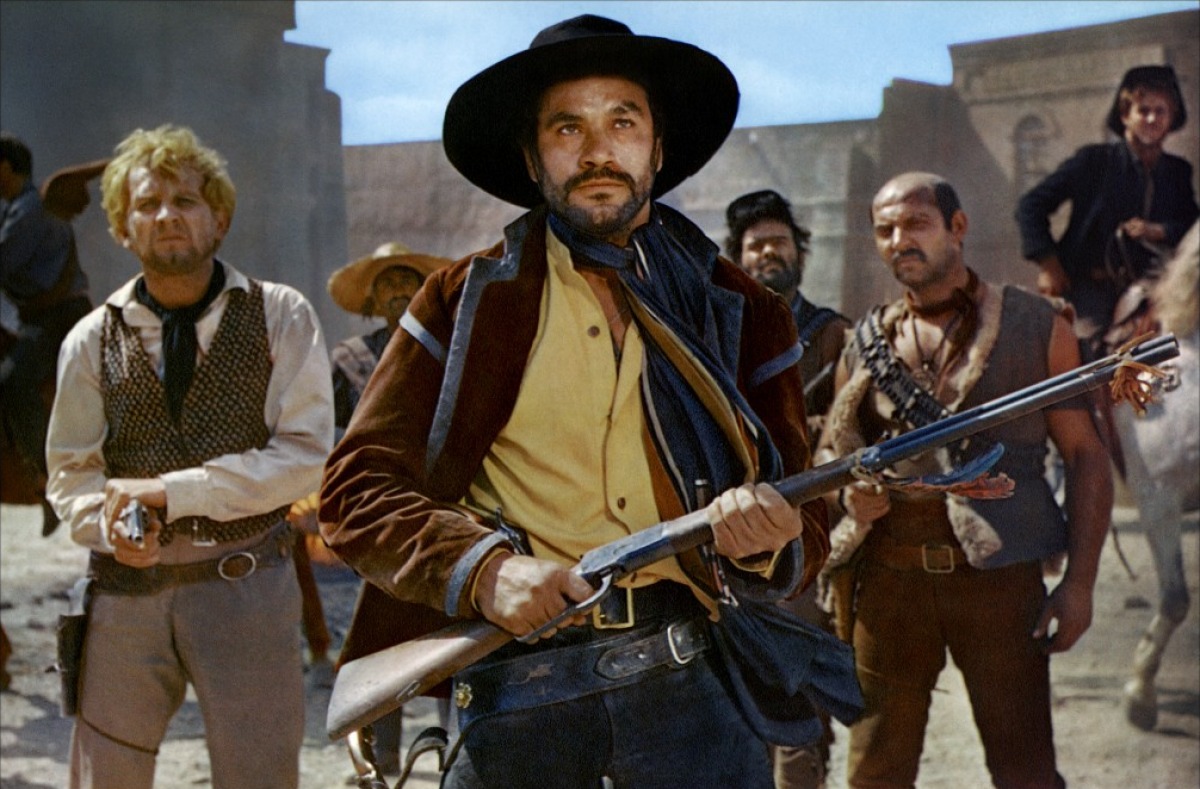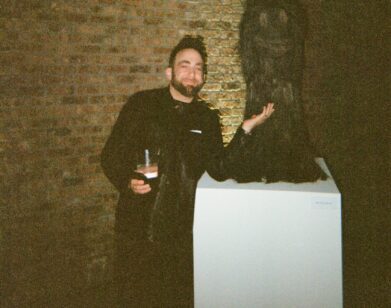William Lustig’s Genre Studies

ALDO SAMBRELL IN NAVAJO JOE, WHICH SCREENS TOMORROW AND NEXT MONDAY AS PART OF ANTHOLOGY FILM ARCHIVES’ WILLIAM LUSTIG PRESENTS SERIES. IMAGE COURTESY OF MGM
Calling up film director William Lustig, I wasn’t sure what to expect. This is the man who created the scene that haunted a big chunk of my childhood: a mustached man getting his head blown apart, in slow motion, in his now-classic Maniac (1980). His DVD label, Blue Underground, specializes in the most tainted and obscure grindhouse movies, the kind the played in theaters with permanently sticky floors. Would he be socially awkward? A bit weird? Possibly creepy?
What I found on the other line was a delightful presence, enthusiastic and more than happy to rap about all types of cinema. For the last four summers, Lustig’s presided over Anthology Film Archive’s annual dip in the pool of psychotronic sleaze, William Lustig Presents, where film freaks can escape the heat and witness a forgotten period of films—one in which the streets are dirty, the cops are crooked, and car chases are pretty much required.
CRAIG HUBERT: The Anthology Film Archives series always brings a lot of excitement among cinephiles. How did the series originate? Did they approach you or did you go to them with the idea?
WILLIAM LUSTIG: Well, it’s kind of a combination of both. Back in 2007, I was was approached by Anthology, who wanted to do a New York vigilante series. And of course, having made the movie Vigilante, I guess I was the first phone call. In the course of getting to know them, I happened to mention, “You know, nobody has ever done a series which honor these incredible movies from the ’70s and ’60s.” For one reason or another, normally because of music clearance problems, these movies, which really deserve to be seen, have just languished.
HUBERT: What is the process of choosing the films in the series?
LUSTIG: The simple process is I have these memories of having seen these movies when they first came out. Back in the late ’60s, and through the ’70s, I was an insatiable filmgoer. I would see, on 42nd Street—I could easily see six to ten movies a day.
HUBERT: Wow.
LUSTIG: I mean, back in the ’70s, New York was the mecca for film. I could go on and on with all the repertory cinemas that were around. Now they’re all vanished, pretty much. We had them on every corner—we had the Bleecker Street Cinema, we had the Thalia, we had the Carnegie Hall Cinema, there was the Fifth Avenue Cinema, Eighth Street Playhouse, all these wonderful cinemas dedicated to repertory. So I was blessed with the opportunity to see all these films on the big screen, and it’s just disappointed me with home media, these films have either been neglected by being put out panned-and-scanned, really shitty copies, or just haven’t been put out at all.
HUBERT: Did the films you saw in New York during this period influence your filmmaking?
LUSTIG: Without a doubt. These films were definitely very important to me. It’s funny, when I go back and watch these films again, I can see where I got an idea for this, or an idea for that, even if I didn’t understand it at the time. That’s kind of fun to discover.
HUBERT: We should discuss a few of the films playing this year. The most fascinating to me is Villain.
LUSTIG: Oh, I love that movie.
HUBERT: I was blown away. People seem to think the film ruined Richard Burton’s career.
LUSTIG: I think at that point he was in a low spot in his career. I gotta tell you, I have such a strong recollection of when I first saw Villain. It played at the Trans-Lux East Theater, which used to be on Third Avenue between 57th and 58th Street, and I went to see it on the first weekend it opened. I remember it like it was yesterday; it was myself and maybe three other people in the theater. The reviews for this movie were uniformly horrendous—calling it bad taste, disgustingly violent. Needless to say, those words really pushed me to go see it. I wasn’t particularly a Richard Burton fan. It played the one week, was a complete bomb, and disappeared. To this day, it’s not available in this country. It’s an orphan. The very first year I put together the program, the film was on my list, but we could never find a print of the film. It was only this year we got lucky.
HUBERT: I imagine that’s a problem you run into frequently. Prints disappear, or deteriorate over time. Has there been anything that you wanted to get for the program that has just been impossible to find?
LUSTIG: Yes. A movie called The Traveling Executioner, starring Stacy Keach. I have tried and tried to get that movie, but we have never been able to find a print of that film. It’s not available anywhere on DVD. It’s a film which is totally neglected.
HUBERT: There are a few New York films in the program this year—Cops and Robbers, The Super Cops. They are particularly interesting to me because they show another side of NYC police in popular entertainment, the anti-Serpico. These cops are blatantly corrupt.
LUSTIG: Keep in mind, with the police in New York, there was an acknowledgement of enormous corruption. It was really bad. The movies of the early ’70s kind of reflected the attitude of the police of the ’60s. So you had movies like Cops and Robbers. I mean, it’s a movie about suburban cops living in Levittown, who just decide they want to cash out. It’s all part of the era, when the cops were dirty. What made those movies so much fun was their cynicism. That’s really the common denominator among all the films I’ve shown. If nothing else, they’re very cynical movies, whether it’s a spaghetti Western or a cop movie. It’s all about people who aren’t exactly who they seem.
HUBERT: Do you think you’ll ever get to a point with the series where you will run out of ideas?
LUSTIG: What’s happened is, as I’ve processed a lot of what we’ve discussed, the studios have realized there’s an audience for their deep catalogue. Last year we showed White Line Fever. Following that Sony put it out on their burn-on-demand DVD. So, it’s not a question of me running out of ideas, it’s that part of the fun of this was that they were unavailable. I think that, probably next year, if we do another series, it will probably be a different theme. It will probably honor a particular director, or actor, from that period. Doing something like that. I’m just not going to be able to find films that are unavailable.
HUBERT: Was the goal of the series for DVD labels, like Warner Archive, to pick up some of the films and get them to the public? Or has that just been a nice surprise?
LUSTIG: I think that in small part, my series has shown the interest that audiences have for these movies. If you look back, we showed The Outfit two years ago, and of course Warner Archive put it out this year.
HUBERT: From what I understand, it’s one of their most popular titles.
LUSTIG: Right. We showed Rolling Thunder as well, and now MGM put it out on their burn-on-demand. So I think we’ve had some influence on the studios. I think we’ll see more of that in the future.
WILLIAM LUSTIG PRESENTS RUNS THROUGH JULY 25 AT ANTHOLOGY FILM ARCHIVES. FOR MORE INFORMATION, PLEASE VISIT ANTHOLOGY’S WEBSITE.






